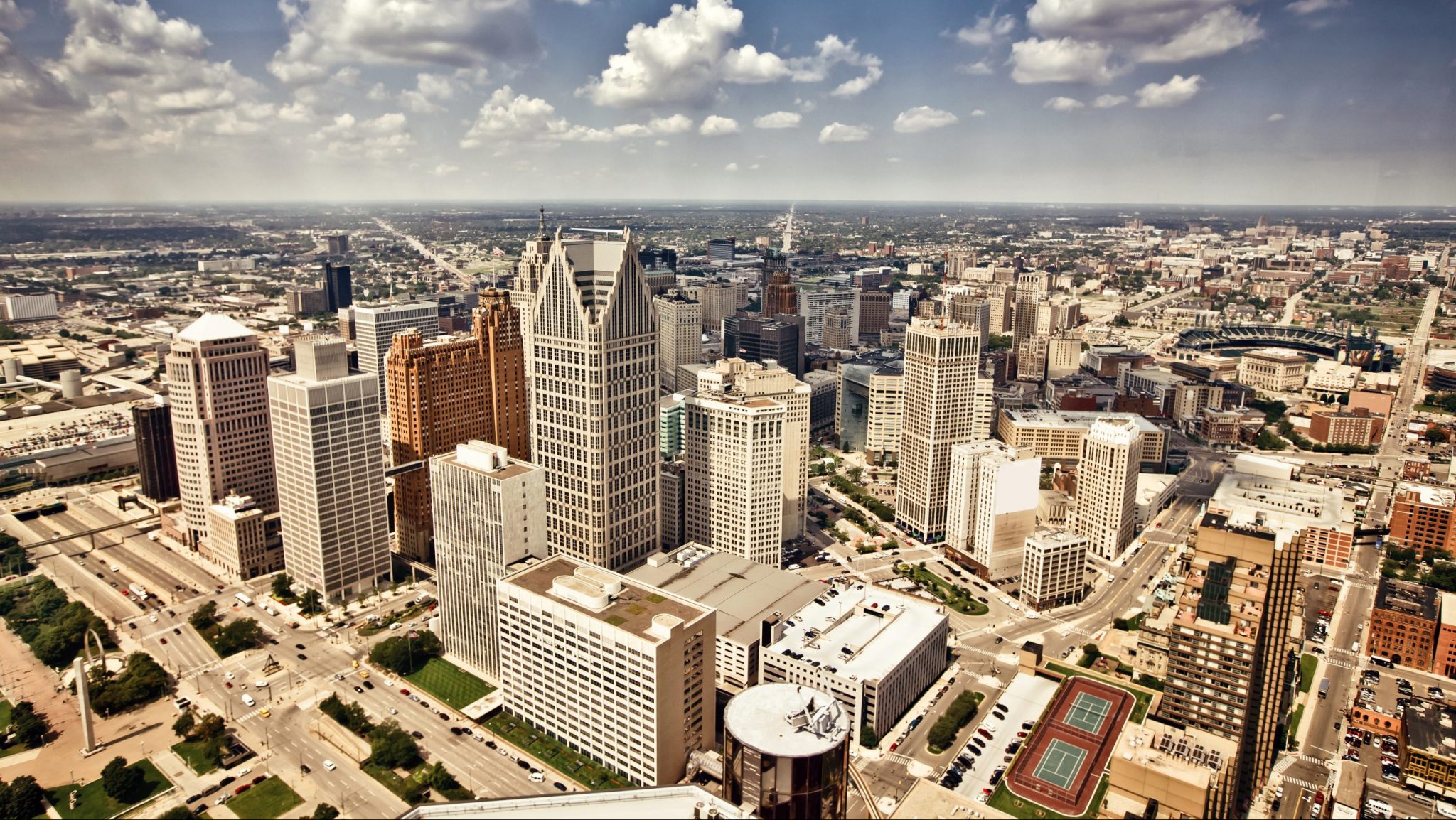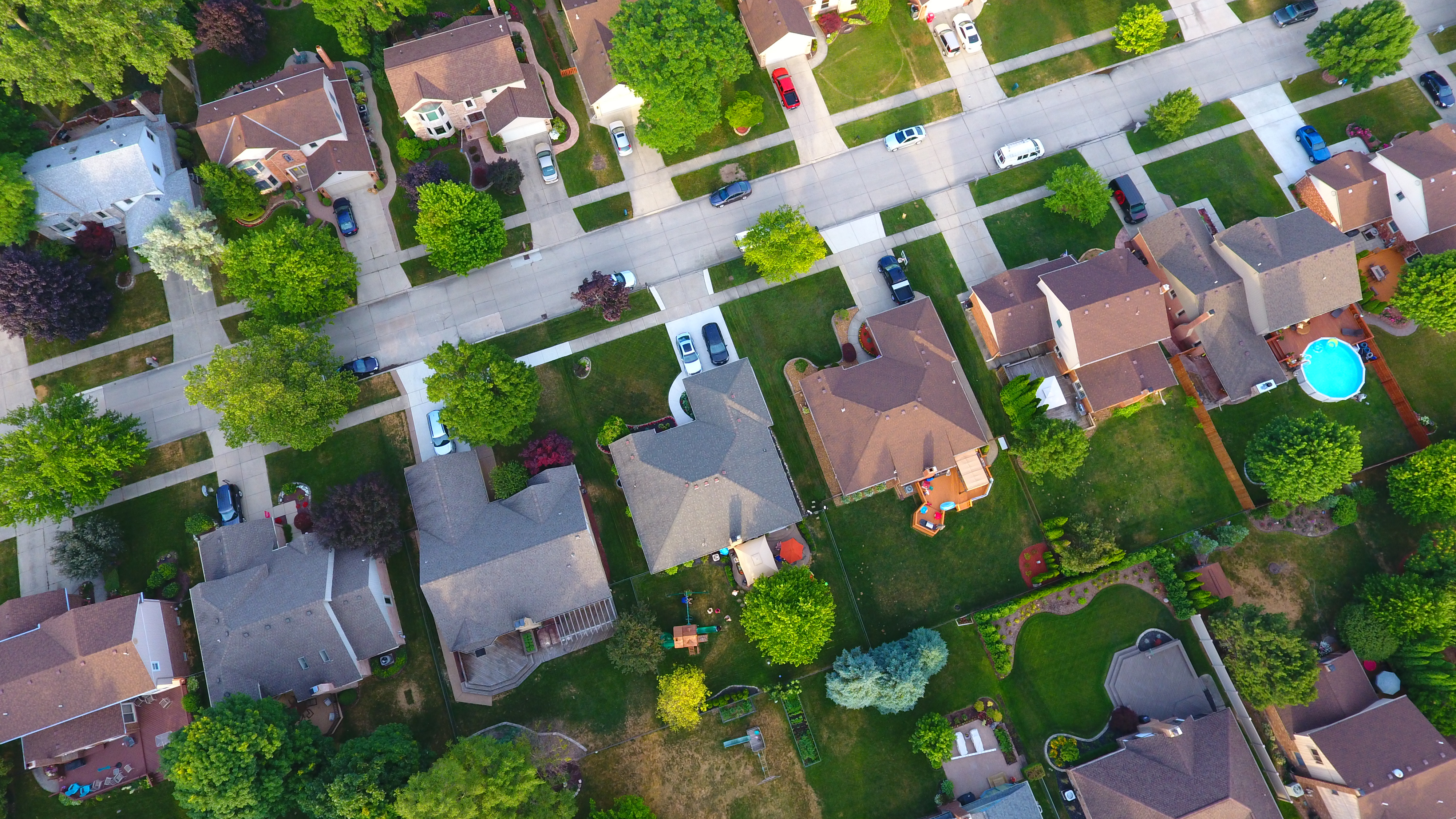How Planting More Trees Could Help Detroit Become a Healthier, More Equitable City
A new report by American Forests says the city is among the top 20 cities in the country that have the most to gain from increasing tree numbers.

FILE - Downtown Detroit skyline.
When it comes to Detroit and its trees, the city was once known for its lush canopy. However, years of decimated city budgets left many overgrown and diseased trees a nuisance to residents. The situation led Mayor Mike Duggan to promote a new campaign to clean up the city’s trees and plant 10,000 new ones, but it wasn’t the success Duggan imagined.
While the city’s tree population is not as dire compared to some other U.S. cities, according to a new report, Detroit is still among the top 20 cities in the country that could benefit the most from increasing the number of trees in its neighborhoods.
American Forests, one of the nation’s oldest conservation groups, recently released a report scoring American cities on tree equity, the number of native trees distributed across urban neighborhoods. The score is based on a number of factors, combining socioeconomic status, existing tree cover, population density, and other data for 150,000 neighborhoods and 486 metropolitan areas to determine whether locations have enough trees to provide optimal health, economic and climate benefits.
“When you put all that together into [a] tree equity score, we now have a way to identify exactly where we need to prioritize investment to bring the healing benefits of trees equitably to all people in our community,” says Jad Daley, president of the nonprofit American Forests.
Daley says Detroit has been a national innovator in partnering with other organizations (including American Forests), including Greening of Detroit to create urban tree nurseries. But there is more work to be done to ensure the benefits extend to all Detroiters.
“These are places where the single-family homes … are baking a little extra in the heat. In fact, Detroit is also in the top 10 in the country for the biggest difference between the hottest neighborhoods and the citywide average so in those hottest neighborhoods in the city where they lack trees, the temperature difference on hot day can be more than 7 degrees compared to an average neighborhood in the city.” — Jad Daley, American Forests
Some neighborhoods such as Indian Village score 100 when it comes to tree equity, meaning that they’re at or above what is considered the target tree canopy appropriate for any given neighborhood, Daley says. Then there are other neighborhoods where the score is in the 30s and 40s. As the climate changes, it could put many residents in these neighborhoods at risk.
On a day when the thermometer hits the high 80s/low 90s, Daley continues, residents in those hotter neighborhoods may also lack air conditioning or can’t afford to run their air conditioning at full blast. Studies show that low-income neighborhoods also have higher rates of residents who have pre-existing health conditions that make them more vulnerable to extreme temperatures and poor air quality.
Related: Why Highland Park, Once Lined with Elms, Is Cutting Down Trees
“When you add all that together, we really have a health equity and climate justice crisis. People who most need trees as protection in their neighborhoods from these pressing threats of heat and air quality are the ones who are least getting that protection.”
More trees help cool the environment (as much as 45 degrees) and improve air quality, Daley says.
“Our tree equity score shows that if Detroit were to plant enough trees to get to tree equity in every neighborhood, it would scrub another more than 500 tons of air pollution for the community,” Daley says.
“[Trees] intercept tremendous amounts of rainfall and they manage how that water flows through the city. Creating tree equity in Detroit, our data show, would avoid more than 1.5 million cubic meters of stormwater runoff.” –Jad Daley, American Forests
Trees also have an important role to play in clean water, Daley says, which is especially relevant amid the recent flooding metro Detroit is experiencing this summer.
“[Trees] intercept tremendous amounts of rainfall and they manage how that water flows through the city. Creating tree equity in Detroit, our data show, would avoid more than 1.5 million cubic meters of stormwater runoff,” he says.
In addition to the health and environmental benefits, planting more trees would also provide a “huge economic payoff.”
“Our analysis shows that if Detroit planted the 1.2 million trees that would be needed for tree equity in every neighborhood across the city, that would generate more than 9,000 jobs. And it would provide ecological benefits worth more than $10 million per year for the city.”
He adds, “The job side of this isn’t an afterthought, it’s a central part of our vision for tree equity — we want tree equity to create economic equity.”
Listen: How tree equity brings environmental and economic benefits to a community.
Trusted, accurate, up-to-date.
WDET strives to make our journalism accessible to everyone. As a public media institution, we maintain our journalistic integrity through independent support from readers like you. If you value WDET as your source of news, music and conversation, please make a gift today.

